When you're selecting between voile and tulle for your next project, you'll encounter two distinctly different textile structures. While both fabrics fall into the sheer category, their manufacturing processes and end-uses couldn't be more different. Voile's plain-weave construction creates a soft, flowing material, whereas tulle's hexagonal mesh pattern forms a stiffer network of holes. Understanding these fundamental differences will help you make the right choice for your specific application.
Key Takeaways
- Voile fabric drapes softly and flows naturally, while tulle is stiffer and maintains its shape due to its hexagonal mesh structure.
- Voile is made from natural fibers like cotton or silk, whereas tulle typically uses synthetic materials like nylon or polyester.
- Voile creates smooth, fluid garments suitable for everyday wear, while tulle adds volume and structure ideal for formal occasions.
- Voile has a soft, smooth texture comfortable against skin, but tulle has a slightly scratchy feel due to its net-like construction.
- Voile requires gentle washing to maintain softness, while tulle needs careful handling to preserve its rigid structural integrity.
Characteristics of Voile Fabric
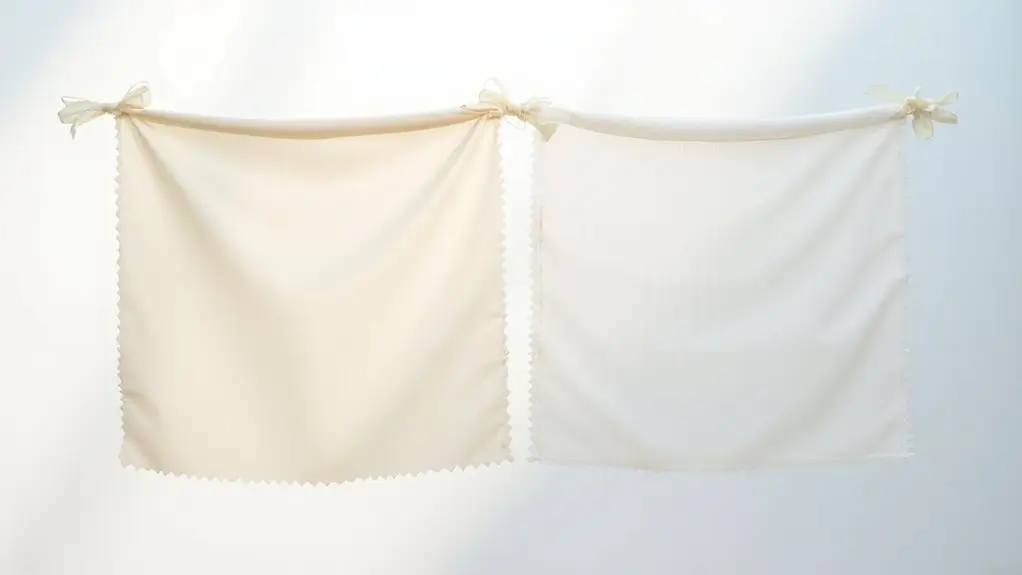
When you examine voile fabric, you'll find it's crafted from cotton, silk, or rayon fibers woven in a plain weave pattern that creates its characteristic sheerness and lightweight feel.
The fabric's physical construction yields a soft, smooth texture with a natural drape and subtle sheen, while maintaining superior breathability through its balanced thread spacing.
You'll commonly see voile fabric used in summer apparel like blouses and dresses, window treatments, and religious garments where its gentle drape and translucent properties are essential to the design.
Material Composition
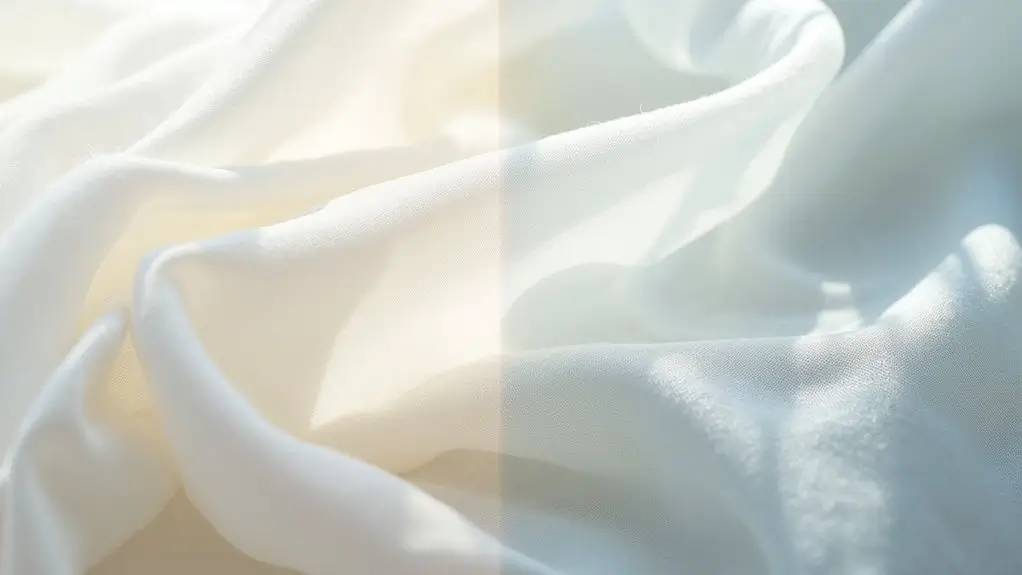
Composed primarily of lightweight natural fibers, voile fabric exhibits a distinctive fine, plain-weave construction that sets it apart from other sheer textiles.
You'll find voile commonly crafted from cotton, which provides excellent breathability and a soft hand feel. Silk voile offers a more luxurious alternative, delivering enhanced drape and a subtle sheen.
The fabric's unique weave structure creates a balanced blend of density and transparency. High-twist yarns are tightly woven to achieve voile's characteristic crisp yet flowing texture.
This composition allows the material to maintain its shape while remaining lightweight and airy, making it ideal for both fashion and decorative applications.
Physical Properties
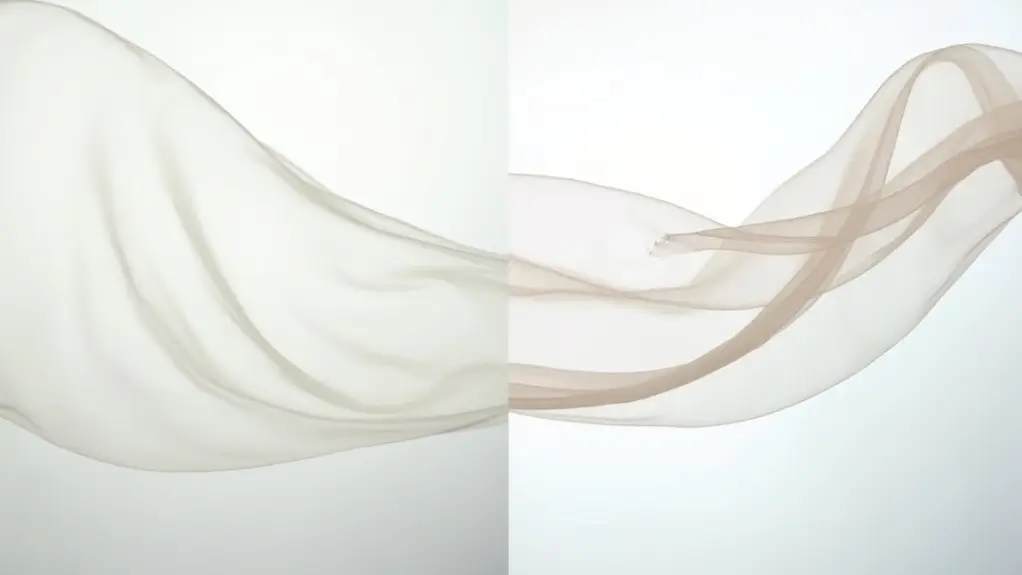
While sharing characteristics with other sheer fabrics, voile distinguishes itself through its unique physical properties that combine lightweight translucency with structural integrity.
You'll find voile's density creates a smoother texture than other sheer materials, offering superior draping capabilities without sacrificing its airy nature. The fabric maintains a delicate balance between transparency and coverage, making it particularly suitable for flowing garments.
Despite its lightweight construction, voile delivers remarkable durability when handled properly. Its fine weave pattern provides a subtle sheen while ensuring the material remains breathable and comfortable.
These properties make voile exceptionally versatile for both fashion and home décor applications.
Typical Uses
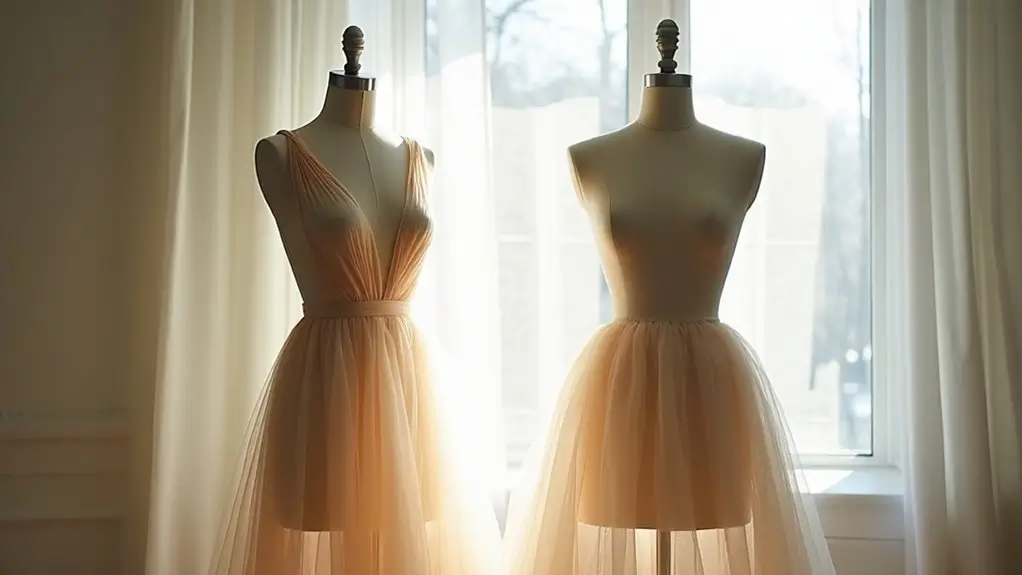
Thanks to its exceptional draping qualities and breathable weave, voile fabric excels in diverse applications across fashion and interior design.
Unlike tulle's rigid structure, you'll find voile's flowing nature perfect for summer blouses, dresses, and lightweight garments that demand both comfort and elegance.
You can maximize voile's translucent properties by incorporating it into layered clothing designs or creating ethereal window treatments.
The fabric's smooth finish makes it particularly suitable for hijabs and decorative scarves, where its gentle drape enhances the overall aesthetic.
When working with multiple layers, voile's minimal fraying characteristics ensure clean, professional results in your sewing projects.
Characteristics of Tulle Fabric

You'll find tulle's mesh-structured composition consists primarily of silk, nylon, or polyester filaments woven into a distinctive hexagonal net pattern.
The fabric's unique construction creates a stiff, dimensional quality that maintains its shape while remaining lightweight and semi-transparent, making it distinctly different from softer dress materials.
These structural properties make tulle particularly suitable for applications requiring volume and form, such as ballet tutus, wedding veils, and formal gown underlays where the fabric's ability to hold shape is essential.
Material Composition
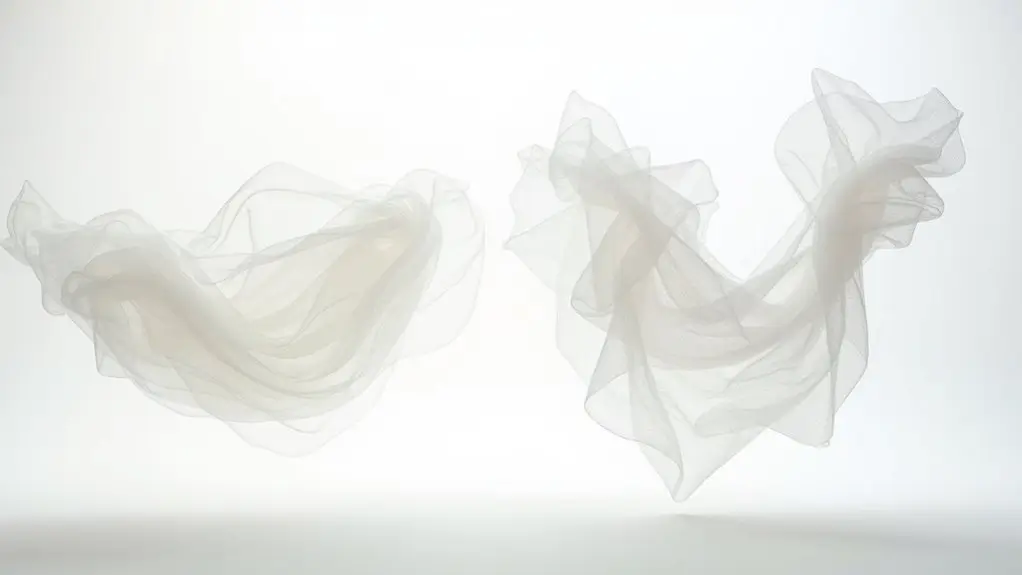
The distinctive mesh structure of tulle fabric emerges from its specialized manufacturing process, creating a lightweight yet robust material.
You'll find this versatile fabric primarily composed of synthetic fibers like nylon and polyester, though traditional silk variants still exist. The material composition directly influences tulle's characteristic stiffness and dimensional stability, making it perfect for structural applications in fashion design.
The hexagonal mesh pattern in tulle's composition allows it to maintain its shape while remaining transparent.
You'll notice its slightly textured surface, which results from the interlocking network of fine threads that create its durable, deformation-resistant structure.
Physical Properties
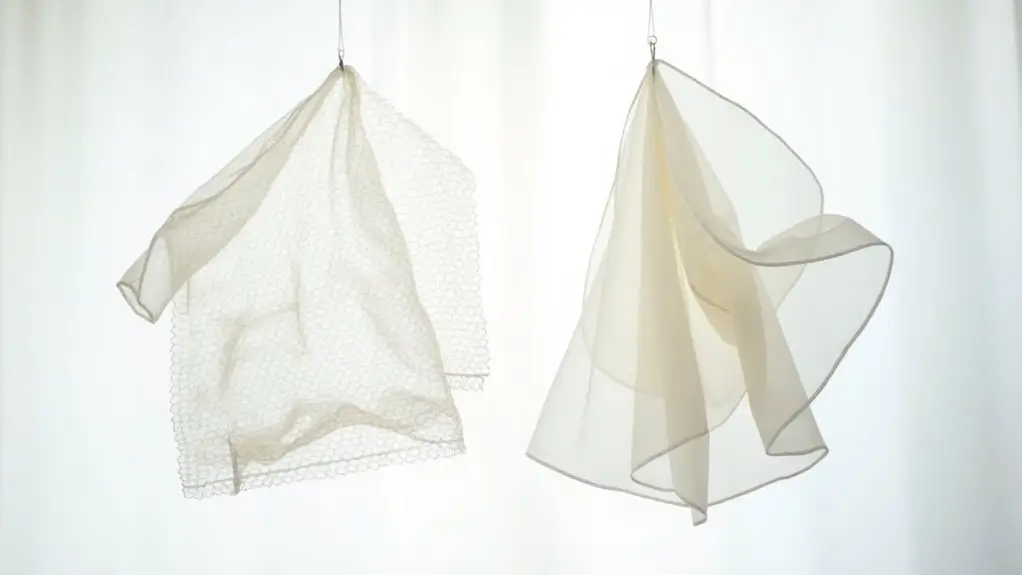
When examining tulle's physical properties, its distinctive hexagonal mesh structure stands out as the defining characteristic that sets it apart from other sheer fabrics.
You'll notice its transparent nature allows light to pass through while maintaining remarkable structural integrity. The fabric's unique weave creates a stiff, slightly rough surface texture that's resistant to deformation, enabling it to hold shapes and add volume to designs.
Unlike softer sheers, tulle's mesh construction provides exceptional stability, though you'll need to handle it with care during washing to preserve its delicate network of interconnected threads.
Typical Uses
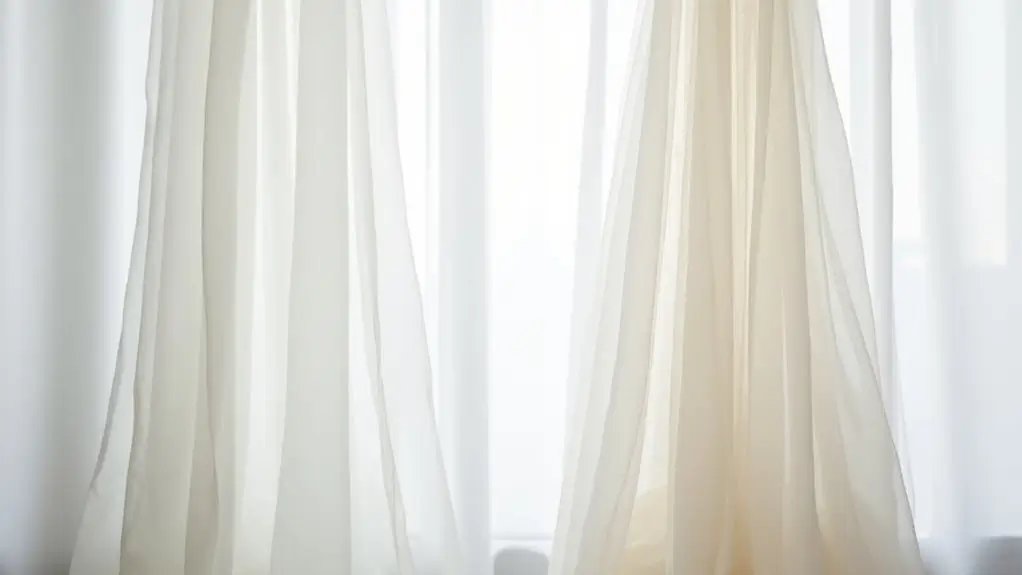
Delicately structured with its signature mesh weave, tulle fabric excels in applications demanding both volume and ethereal aesthetics.
You'll find this versatile material prominently featured in bridal wear, where it's used to create flowing veils and structured dress overlays.
The fabric's unique construction makes it ideal for creating three-dimensional forms in ballet tutus and stage costumes.
In home décor, you'll spot tulle's airy qualities in window treatments and decorative draping.
Its typical uses extend to special occasion garments where you need a firm yet lightweight structure.
The material's transparent nature makes it perfect for layering effects in both fashion and performance wear.
Key Differences Between Voile and Tulle
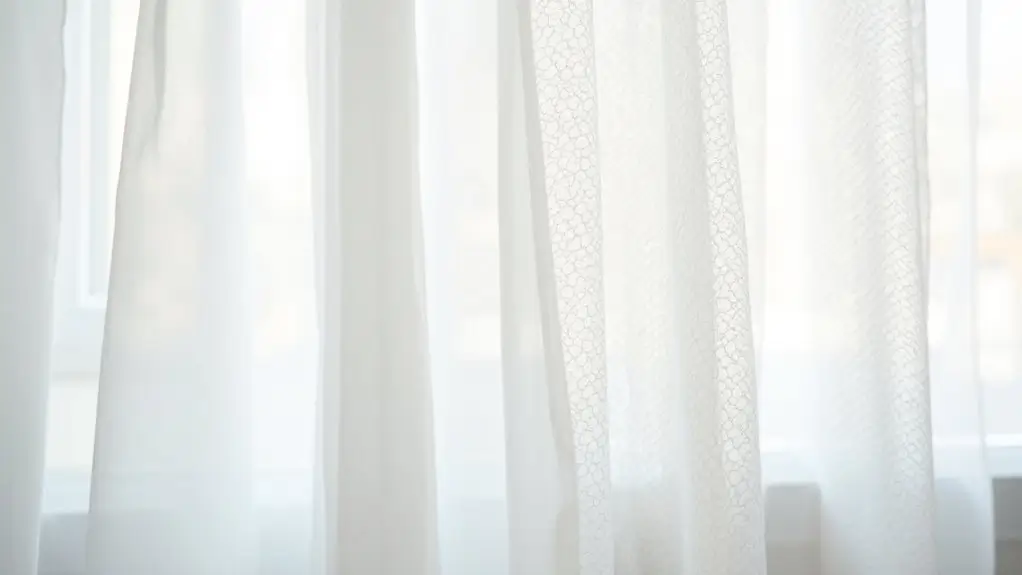
You'll find voile's plain weave structure creates a soft, flowing texture that contrasts sharply with tulle's hexagonal mesh construction.
The visual difference becomes apparent as voile's smooth surface allows for graceful draping, while tulle's rigid netting maintains shape and volume in garments.
These distinct characteristics determine their applications: voile excels in lightweight summer wear and flowing curtains, whereas tulle's structural integrity makes it essential for formal wear and decorative layering.
Texture and Feel
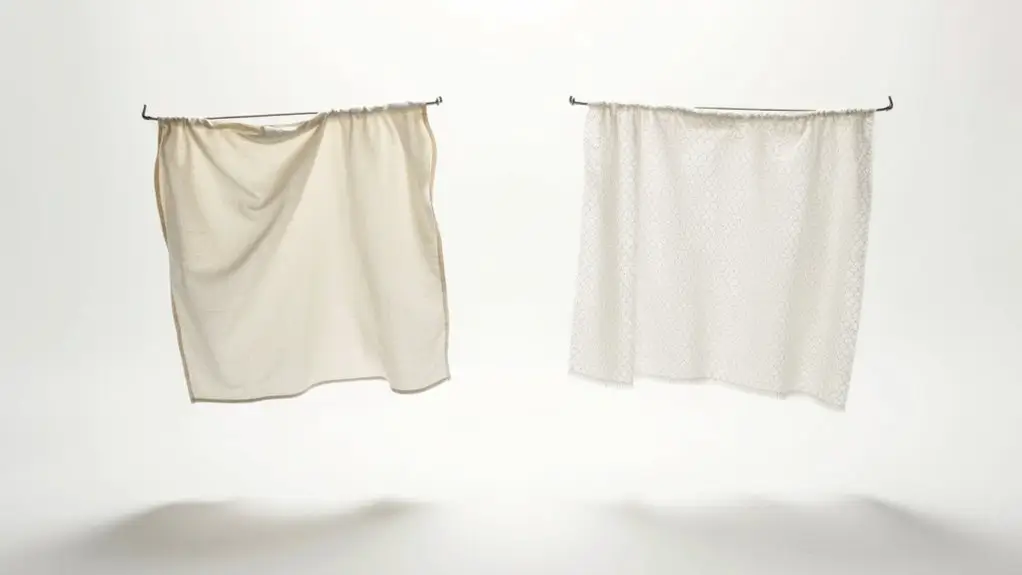
Although both voile and tulle are classified as sheer fabrics, their textures create distinctly different sensory experiences.
You'll notice voile's smooth, soft texture against your skin, making it perfect for garments that require direct contact. The fabric's weave creates a fluid, graceful drape that moves with your body.
In contrast, tulle's mesh construction produces a stiffer feel with a slightly scratchy texture. Its structured weave pattern forms a more rigid material that maintains its shape and volume. While this texture might be less comfortable for direct skin contact, it's ideal for creating dimensional effects in layered designs.
Appearance and Style
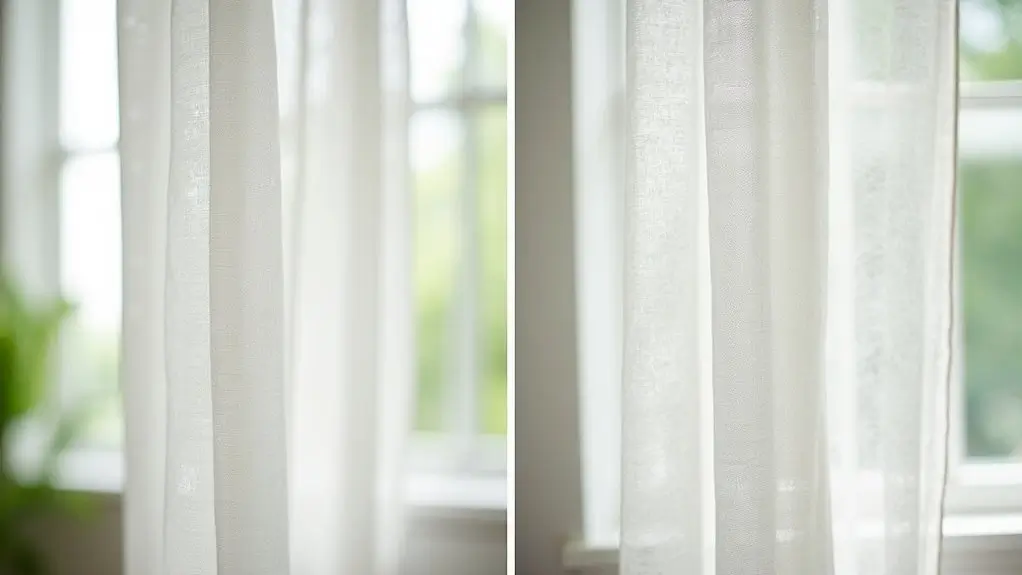
The distinct visual characteristics of voile and tulle stem directly from their unique construction methods. Their appearance and structure create fundamentally different aesthetics in textile applications.
- Voile's tight weave produces a smooth, translucent surface with a subtle sheen, creating fluid silhouettes that drape naturally against the body.
- Tulle's hexagonal mesh structure results in a more rigid, net-like appearance that maintains dimensional stability.
- Seam visibility differs significantly - voile conceals construction details with its softer transparency.
- Tulle's open weave prominently displays structural elements, making it ideal for layered, architectural designs where visible construction adds to the aesthetic.
Functionality
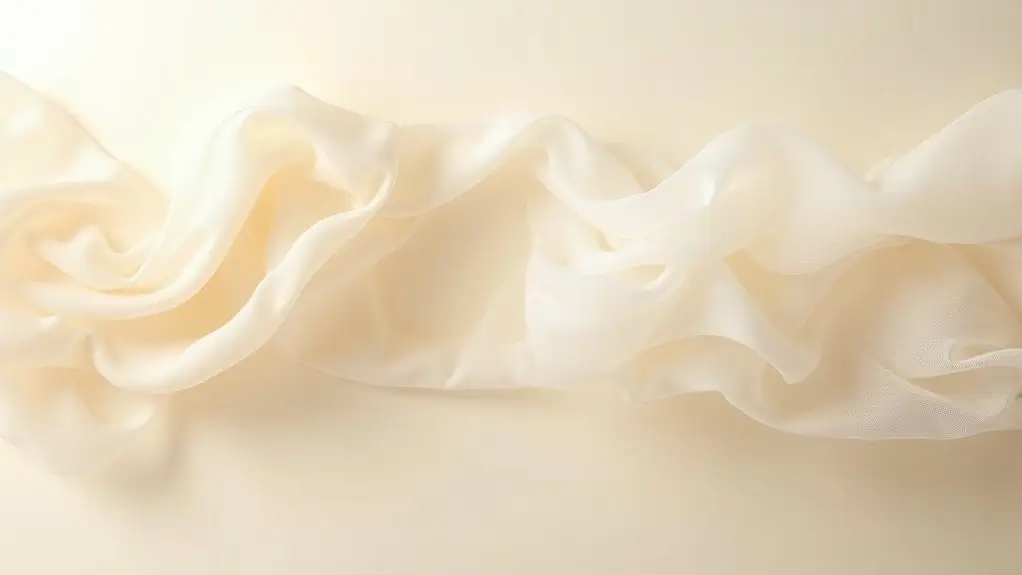
When examining the functional distinctions between voile and tulle, their inherent structural properties dictate vastly different applications.
You'll find voile's softness and natural drape make it ideal for body-conforming garments and flowing curtains, where breathability and comfort are essential. Its smooth weave allows for close-fitting designs while maintaining airflow.
In contrast, tulle's mesh construction creates volume and structural support, making it perfect for formal wear that requires dimensional stability. While voile excels in everyday comfort and gentle aesthetics, tulle's rigid network provides the architectural foundation needed for dramatic silhouettes in wedding gowns and performance costumes.
Choosing Between Voile and Tulle

When selecting between voile and tulle, you'll need to evaluate your project's specific requirements, including drape characteristics, structural needs, and intended wear occasion.
You can maximize each fabric's strengths by using voile for flowing, close-to-body designs and tulle for projects requiring volume and architectural shape.
For complex designs, you might consider combining both fabrics - utilizing voile's soft drape for the main garment while incorporating tulle elements for structured accents or layered effects.
Factors to Consider
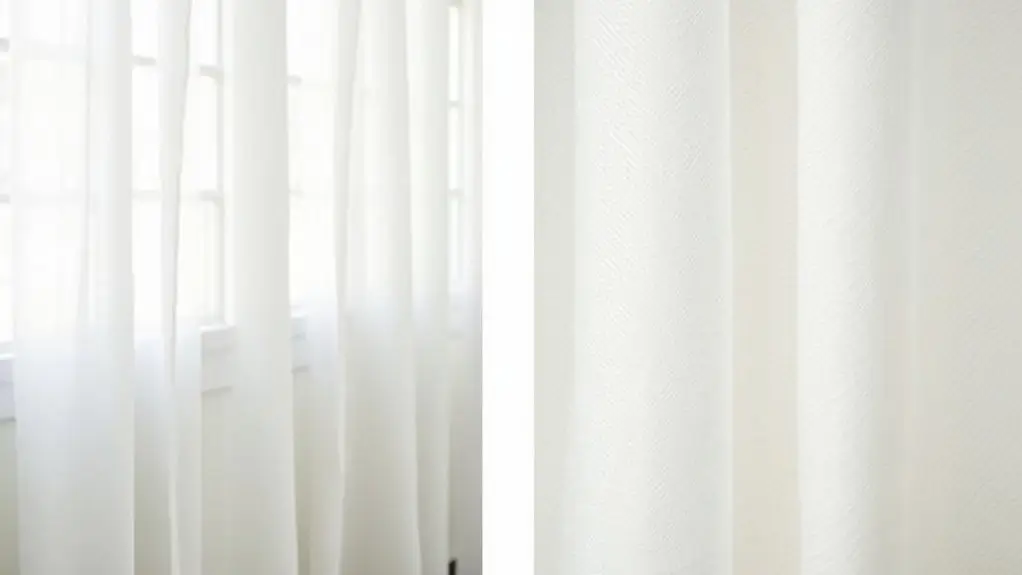
Selecting between voile and tulle requires careful consideration of their distinct structural properties and intended applications. These fabrics serve different purposes based on their unique characteristics and performance requirements.
- Transparency level: Voile offers a subtle sheerness ideal for layered garments, while tulle's pronounced mesh creates defined see-through patterns.
- Material composition: Choose cotton or rayon voile for breathability, or nylon/polyester tulle for structure.
- Occasion suitability: Voile excels in everyday wear, while tulle shines in formal settings.
- Care requirements: Consider voile's need for gentle washing versus tulle's structural maintenance demands.
Combining Fabrics
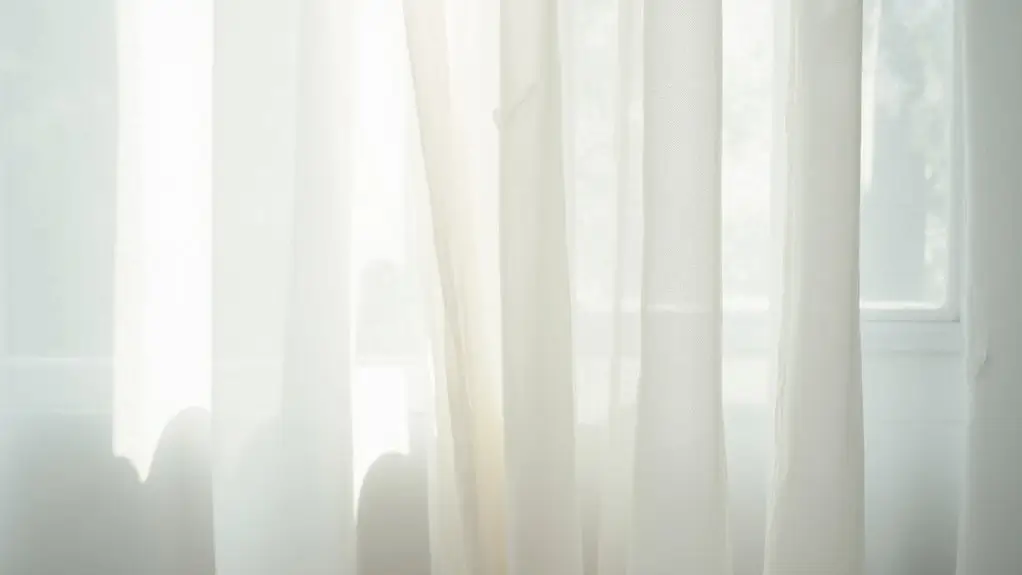
The art of combining voile and tulle opens up a realm of creative possibilities in textile design.
When layering these fabrics, you'll find tulle's structured nature creates dramatic volume while voile's soft drape adds flowing elegance underneath. You can achieve striking contrasts by positioning tulle's netted texture over voile's smooth surface, creating depth and visual interest in your designs.
For maximum impact, layer tulle strategically to build structure in formal pieces, while using voile to maintain comfort and breathability.
This combination works particularly well in evening wear, where you'll want to balance the dramatic effect of tulle with voile's gentle refinement.
Conclusion
Understanding the distinct weave structures, you'll find voile's plain-weave construction with high-twist yarns creates a light, flowing characteristic, while tulle's hexagonal net pattern produces its signature rigid mesh. When selecting between these textiles, consider that voile's 40-60 thread count offers breathability and drape, whereas tulle's bobbinet construction maintains shape and structure. Your project's requirements for durability, transparency, and movement should guide your final material choice.


0 comments